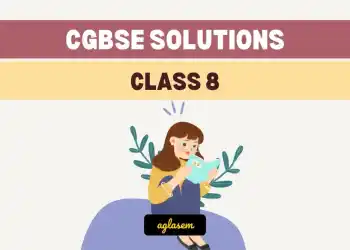NCERT Solutions for Class 8 Science have been updated on aglasem. So now you can download Class 8 Science Solutions PDF for all chapters here. These NCERT Solutions contain answers of questions asked in Class 8 Science book namely Science for all exercises. Therefore you can use Science solutions guide to complete class 8 syllabus, and use it with Science notes to get full marks in exams.
NCERT Solutions for Class 8 Science
What are NCERT Solutions for Class 8 Science?
The NCERT Solutions Class 8 Science is the collection of questions and their correct answers asked in exercises of all chapters of NCERT Book for Class 8 Science. Therefore these NCERT Solutions for Class 8 contain chapter-wise answers of the book or books Science. They are as follows.
NCERT Solutions for Class 8 Science PDF
- Chapter 1 Crop Production and Management
- Chapter 2 Microorganisms Friend and Foe
- Chapter 3 Coal and Petroleum
- Chapter 4 Combustion and Flame
- Chapter 5 Conservation of Plants and Animals
- Chapter 6 Reproduction in Animals
- Chapter 7 Reaching the Age of Adolescence
- Chapter 8 Force and Pressure
- Chapter 9 Friction
- Chapter 10 Sound
- Chapter 11 Chemical Effects of Electric Current
- Chapter 12 Some Natural Phenomena
- Chapter 13 Light
How to download NCERT Solutions for Class 8 Science PDF?
There is a simple way to download class 8 Science solutions PDF here at aglasem. So if you have to solve exercises of class 8 Science NCERT book multiple times, then you can use solutions of NCERT book Science as per your convenience. The steps to download class 8 Science questions answers guidebook is as follows.
- Start by searching NCERT Solutions for Class 8 Science PDF aglasem to come to this page.
- Then click the link of the Class 8 Science Solutions Chapter for which you want to know answers.
- Now pdf file of NCERT questions answers for class 8 Science for that chapter opens.
- Thereafter click download pdf link to get Class 8 Science NCERT Solutions PDF for all exercises of the topic.
NCERT Solutions for Class 8
One has to study multiple subjects in addition to Science in standard 8. You can use NCERT solutions of respective topic when you solve their exercises. The Class 8 NCERT Solutions for all subjects are as follows.
NCERT Solutions
The National Council of Educational Research and Training (NCERT) has books for all classes. You can explore the book solutions depending on your grade level. Here are NCERT book solutions for all classes.
- NCERT Solutions for Class 1
- NCERT Solutions for Class 2
- NCERT Solutions for Class 3
- NCERT Solutions for Class 4
- NCERT Solutions for Class 5
- NCERT Solutions for Class 6
- NCERT Solutions for Class 7
- NCERT Solutions for Class 8
- NCERT Solutions for Class 9
- NCERT Solutions for Class 10
- NCERT Solutions for Class 11
- NCERT Solutions for Class 12
NCERT Solutions for Class 8 Science – An Overview
The important highlights of this study material are as listed below.
| Aspects | Details |
|---|---|
| Class | Class 8th |
| Subject | Science |
| Name of NCERT Book or Books For This Subject | Science |
| Educational Material Here | NCERT Book Solutions of Class 8 Science |
| More Book Solutions For This Class | NCERT Solutions Class 8 |
| More Book Solutions | NCERT Solutions |
| Download NCERT Book PDF For This Subject | NCERT Book for Class 8 Science |
| Read These NCERT Questions Answers in Hindi Medium | NCERT Solutions of Class 8 Science in Hindi |
If you have any queries on NCERT Solutions for Class 8 Science, then please ask in comments below.
To get study material, exam alerts and news, join our Whatsapp Channel.

